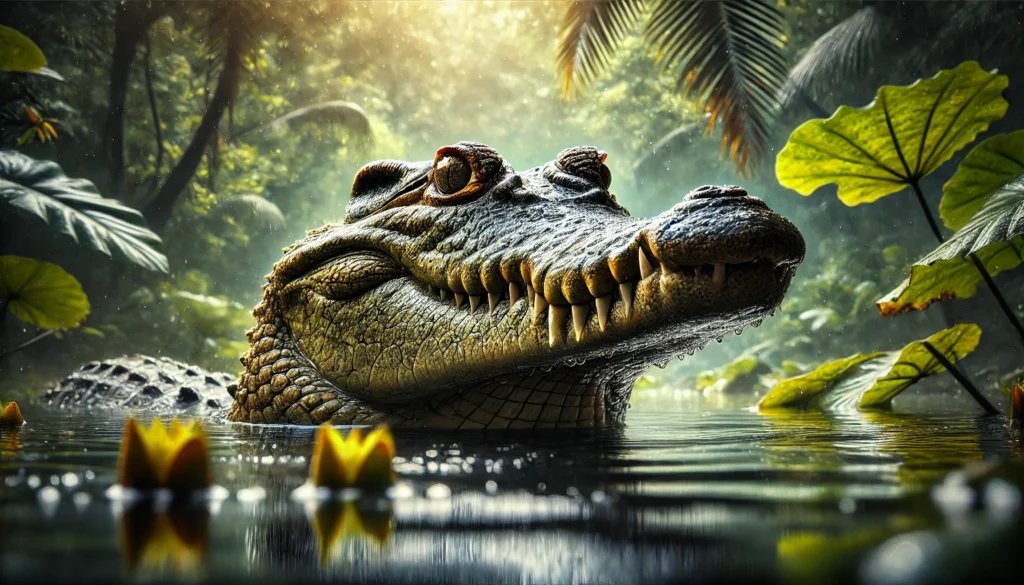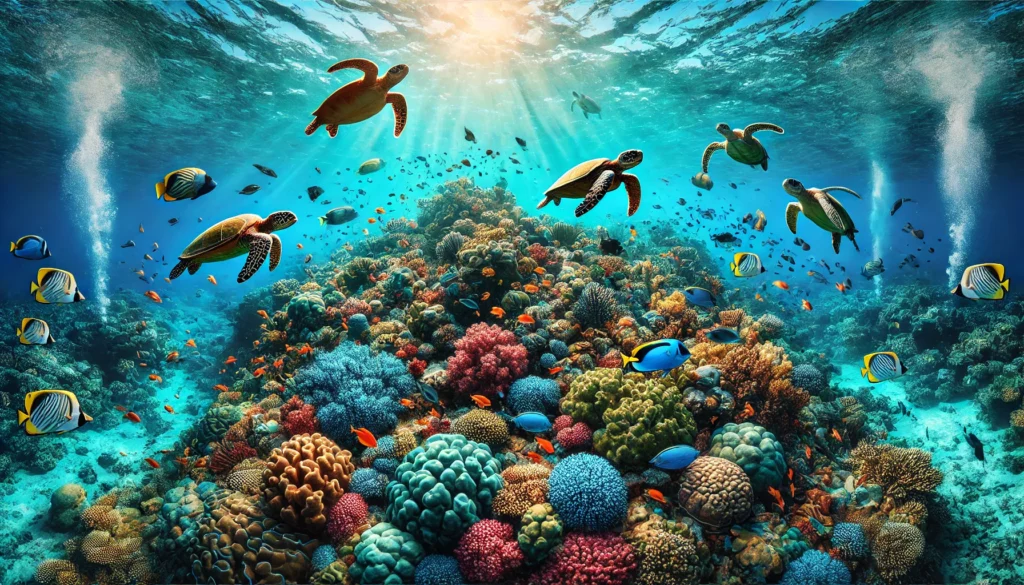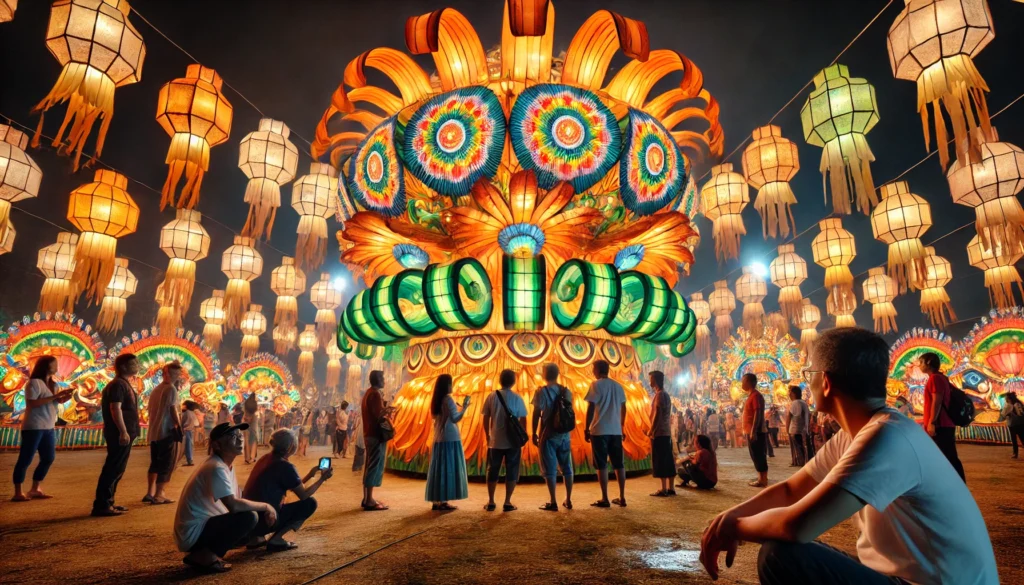Picture this: you’re strolling through a lush Philippine forest, admiring the vibrant flora and fauna, when suddenly, you lock eyes with a creature that looks like it crawled straight out of Jurassic Park. No, you haven’t stumbled onto a movie set – you’ve just encountered the Philippine crocodile, one of the world’s most endangered reptiles. Now, before you start running for the hills, screaming like a B-movie extra, let me assure you that these scaly fellows are more in danger from us than we are from them. In fact, they’re so rare that spotting one in the wild is like finding a needle in a haystack – if the needle was a living, breathing, toothy reptile, that is.
The Philippine crocodile, or Crocodylus mindorensis if you’re feeling fancy, is a fascinating creature that’s been lurking in the waterways of the Philippines for millions of years. But thanks to human activities like habitat destruction, hunting, and our general tendency to freak out at the sight of anything with more teeth than a Great White Shark, these crocs have found themselves on the brink of extinction. It’s time we gave these misunderstood reptiles a fighting chance, don’t you think? So, grab your pith helmet and mosquito repellent as we dive into the world of Philippine crocodile conservation – it’s going to be a snappy ride!
The Plight of the Philippine Crocodile: A Reptilian Soap Opera
A Tale of Woe and Scales
Once upon a time, in a land not so far away, Philippine crocodiles roamed freely across the archipelago, living their best lives as the apex predators of their watery domains. Fast forward to today, and their story reads like a reptilian soap opera – full of drama, danger, and dwindling numbers. These scaly celebrities have gone from “rulers of the rivers” to “endangered A-listers” faster than you can say “crikey!”
The reasons behind their decline are about as pleasant as a toothache (crocodile or otherwise). Habitat loss has hit these crocs harder than a meteor hit the dinosaurs. As humans expanded their territories, the crocodiles found their homes shrinking faster than a wool sweater in a hot wash. Hunting didn’t help either – apparently, some folks thought having a crocodile handbag was more important than having actual crocodiles. Talk about misplaced priorities!
From Feared to Endangered: A PR Nightmare
Let’s face it, crocodiles have never won any popularity contests. Their reputation as fearsome predators has been their downfall, leading to widespread fear and misunderstanding among local communities. It’s like they’re stuck in a never-ending episode of “Extreme Makeover: Reptile Edition,” desperately trying to convince people they’re not the villains they’re made out to be.
The numbers paint a grim picture of their decline. Brace yourself for some shocking stats:
| Year | Estimated Population | Status |
|---|---|---|
| 1980s | 5,000-7,000 | Vulnerable |
| 1990s | 1,000-2,000 | Endangered |
| 2000s | 100-200 | Critically Endangered |
| 2020 | 92-137 | Critically Endangered |
Yikes! That’s a drop steeper than a crocodile’s dentist bill. It’s clear that without some serious intervention, these scaly swimmers might just become a thing of the past, joining the ranks of other extinct species in the great big zoo in the sky.
Conservation Efforts: Operation Save-the-Croc
Crocodile Crossing: No Human Left Behind
Now that we’ve painted a picture gloomier than a crocodile’s underwater lair, let’s shine a spotlight on the heroes working tirelessly to turn the tide for our reptilian friends. Conservation efforts for the Philippine crocodile are in full swing, and they’re more action-packed than a Hollywood blockbuster – minus the explosions and improbable plot twists, of course.
One of the key players in this conservation saga is the Mabuwaya Foundation. Founded in 2003, these croc crusaders have been working harder than a one-armed wallpaper hanger to protect the Philippine crocodile and its habitat. Their approach is about as multi-faceted as a crocodile’s scales, covering everything from habitat protection to community education. It’s like they’re running a full-service spa for crocodiles, minus the cucumber slices over the eyes (because, let’s face it, that would just be weird).
School of Croc: Educating the Masses
Education is a cornerstone of conservation efforts, and the Mabuwaya Foundation has taken this to heart. They’ve launched educational programs that are more engaging than a crocodile dentist appointment (and considerably less terrifying). These programs aim to teach local communities about the importance of crocodile conservation, turning fear into fascination faster than you can say “Crocodylus mindorensis” three times fast.
One of their most successful initiatives is the “Adopt-a-School” program. No, they’re not sending crocodiles to school (can you imagine the chaos in the cafeteria?). Instead, they’re bringing crocodile conservation education to schools near crocodile habitats. It’s like “Bring Your Croc to School Day,” minus the actual crocs and plus a whole lot of learning.
Here’s a quick look at the impact of their educational efforts:
| Year | Schools Reached | Students Educated | Teachers Trained |
|---|---|---|---|
| 2010 | 10 | 1,500 | 50 |
| 2015 | 25 | 3,750 | 125 |
| 2020 | 40 | 6,000 | 200 |
Now that’s what I call a croc-ucation!
Habitat Protection: Home Sweet Swamp
Sanctuary City: Crocodile Edition
While education is crucial, it’s not much use if the crocodiles don’t have a place to call home. That’s where habitat protection comes in, and conservationists have been working harder than a crocodile trying to do pushups to secure safe spaces for these scaly swimmers.
The creation of sanctuaries has been a game-changer in Philippine crocodile conservation. It’s like setting up a gated community for crocs, complete with “No Humans Allowed” signs (okay, not really, but you get the idea). These protected areas give crocodiles a chance to live their best lives, free from the threat of habitat destruction and human interference.
One shining example is the Dicatian Crocodile Sanctuary in Isabela Province. Established in 2007, this sanctuary is like a five-star resort for crocodiles, offering prime real estate in the form of lakes, marshes, and forests. It’s so exclusive that even the paparazzi can’t get in (not that crocodiles are known for their love of the limelight, but still).
Swamp Watch: Guarding the Gates
Of course, setting up sanctuaries is only half the battle. Keeping them safe is a whole other kettle of fish (or should I say, crocodiles?). That’s where local communities come in. Conservation efforts have focused on involving local people in sanctuary management, turning them from potential threats to staunch allies.
The “Bantay Sanktuwaryo” program, which translates to “Sanctuary Guards,” is a prime example of community involvement. Local residents are trained to monitor and protect crocodile habitats, becoming the eyes and ears of conservation efforts. It’s like having a neighborhood watch program, but instead of looking out for suspicious characters, they’re keeping an eye out for anything that might threaten their scaly neighbors.
Here’s a snapshot of the Bantay Sanktuwaryo program’s growth:
| Year | Number of Guards | Area Protected (hectares) |
|---|---|---|
| 2010 | 20 | 500 |
| 2015 | 35 | 1,000 |
| 2020 | 50 | 1,500 |
Now that’s what I call a croc-solid defense!
Breeding Programs: Playing Crocodile Cupid
Love in Captivity: Matchmaking for Scaly Singles
When the wild population of a species drops as low as the Philippine crocodile’s has, sometimes you need to give nature a helping hand. Enter captive breeding programs, where conservationists play Cupid for crocodiles. It’s like a dating show for reptiles, minus the cheesy pickup lines and awkward rose ceremonies.
The Palawan Wildlife Rescue and Conservation Center, also known as the Crocodile Farm and Nature Park, has been at the forefront of these efforts. They’ve been running a breeding program that’s more successful than a crocodile in a chicken coop (ethically sourced chicken, of course – we’re conservationists, not monsters!).
From Hatchling to Hero: Raising Baby Crocs
Once the miracle of crocodile life occurs, the real work begins. Raising baby crocodiles is no walk in the park – it’s more like a swim in a very carefully monitored and temperature-controlled pond. These little snappers need round-the-clock care, a balanced diet, and more attention than a toddler with a new toy.
The goal is to raise these hatchlings until they’re big and strong enough to survive in the wild. It’s like running a boarding school for crocodiles, complete with lessons in hunting, swimming, and the art of looking intimidating (though that last one comes pretty naturally to them).
Here’s a look at the breeding program’s success over the years:
| Year | Eggs Laid | Hatchlings | Survivors to Release Age |
|---|---|---|---|
| 2010 | 50 | 30 | 20 |
| 2015 | 75 | 50 | 35 |
| 2020 | 100 | 70 | 50 |
Now that’s what I call a croc-tastic success rate!
Reintroduction: The Great Crocodile Homecoming
Operation Croc Drop: Returning to the Wild
After all the hard work of breeding and raising crocodiles in captivity, comes the grand finale – reintroduction to the wild. It’s like “Free Willy,” but with fewer emotional speeches and more scales. This process is as delicate as a crocodile doing ballet (now there’s an image for you), requiring careful planning and execution.
Reintroduction sites are chosen with more care than a crocodile selecting its sunbathing spot. Factors like habitat quality, food availability, and absence of threats are all considered. It’s like finding the perfect neighborhood for your scaly friends to settle down in.
Sink or Swim: Monitoring the New Kids on the Block
Once the crocodiles are released, the work isn’t over. Conservationists monitor these reintroduced individuals more closely than a helicopter parent watching their kid’s first day of school. They use radio telemetry to track the crocodiles’ movements, giving us more insight into their behavior than a reality TV show.
This monitoring helps assess the success of reintroduction efforts and provides valuable data for future conservation strategies. It’s like having a backstage pass to the life of a crocodile, minus the risk of becoming lunch.
Here’s a look at the reintroduction efforts over the years:
| Year | Crocodiles Released | Survival Rate After 1 Year |
|---|---|---|
| 2010 | 10 | 60% |
| 2015 | 20 | 70% |
| 2020 | 30 | 80% |
Now that’s what I call a croc-celent return on investment!
Community Involvement: It Takes a Village to Raise a Crocodile
From Foe to Friend: Changing Hearts and Minds
Remember how we talked about crocodiles having a bit of a PR problem? Well, that’s where community involvement comes in. Conservation efforts have focused on transforming local attitudes from fear and hostility to understanding and even pride. It’s like giving the crocodile a complete image makeover, minus the makeup and fancy clothes (because let’s face it, a crocodile in a tuxedo would just be ridiculous).
Programs like the “Pride Campaign” run by the Mabuwaya Foundation have been instrumental in this transformation. They’ve turned the Philippine crocodile into a symbol of local pride faster than you can say “snappy mascot.” It’s like the crocodile has gone from being the villain in the story to the misunderstood anti-hero that everyone roots for.
Croc-onomics: Conservation that Pays
One of the most effective ways to get communities on board with conservation is to make it economically beneficial. After all, nothing says “let’s save the crocodiles” quite like a boost to the local economy. Conservation programs have worked to develop sustainable livelihoods that align with crocodile protection. It’s like killing two birds with one stone, except no birds (or crocodiles) are harmed in the process.
Ecotourism has been a game-changer in this regard. Turns out, people will pay good money to see crocodiles in their natural habitat (from a safe distance, of course). It’s like turning your local swamp into a theme park, minus the overpriced snacks and long queues.
Here’s a look at how community involvement has grown over the years:
| Year | Communities Involved | Eco-tourism Revenue (USD) |
|---|---|---|
| 2010 | 5 | 10,000 |
| 2015 | 10 | 25,000 |
| 2020 | 15 | 50,000 |
Now that’s what I call a croc-worthy community effort!
The Road Ahead: Challenges and Opportunities
Crocodile Tears: Ongoing Threats
Despite all these efforts, the Philippine crocodile isn’t out of the woods (or should I say, out of the swamp) yet. Ongoing challenges include habitat fragmentation, climate change, and the occasional misguided individual who still thinks a crocodile handbag is a good idea (spoiler alert: it’s not).
Climate change, in particular, poses a unique threat. Rising temperatures could affect the sex ratios of crocodile populations (bet you didn’t see that coming). You see, like many reptiles, the sex of crocodile hatchlings is determined by the temperature during incubation. Too hot, and you end up with more males than females. It’s like Mother Nature’s own version of speed dating gone wrong.
Hope Springs Eternal: Future Conservation Strategies
But fear not, dear reader! Conservation efforts are evolving faster than a crocodile can snap its jaws. Future strategies include:
- Expanding protected areas: Because if a little sanctuary is good, a bigger sanctuary is better!
- Genetic studies: To ensure we’re not just saving crocodiles, but saving genetically diverse crocodiles. It’s like making sure we have a full box of crayons, not just a bunch of green ones.
- Advanced tracking technologies: Because knowing where your crocodiles are is half the battle.
- International cooperation: Because crocodiles don’t care about borders, and neither should conservation efforts.
Snapping Back from the Brink
As we wrap up our journey through the world of Philippine crocodile conservation, it’s clear that these scaly swimmers have been through more ups and downs than a crocodile on a seesaw. But thanks to the tireless efforts of conservationists, local communities, and some very understanding crocodiles, there’s hope on the horizon.
From education programs that are changing hearts and minds, to breeding efforts that would make any matchmaker proud, the work being done to save the Philippine crocodile is nothing short of heroic. It’s a testament to what we can achieve when we decide that every species, no matter how many teeth it has, deserves a fighting chance.
So the next time you hear about the Philippine crocodile, don’t run away screaming. Instead, take a moment to appreciate these living dinosaurs and the people working to protect them. After all, a world without crocodiles would be a little less exciting, a little less diverse, and a whole lot less snappy.
Remember, in the great story of conservation, every one of us has a role to play. Whether it’s supporting conservation organizations, spreading awareness, or just learning to appreciate these misunderstood creatures, we can all do our part to ensure that the Philippine crocodile continues to lurk in the waterways of the Philippines for generations to come.
Now, if you’ll excuse me, I’m off to practice my crocodile impression. I hear it’s all in the smile!
Disclaimer: While we’ve done our best to ensure the accuracy of the information in this blog, please note that conservation data can change rapidly. If you spot any inaccuracies, please report them so we can correct them promptly. After all, we’re only human – unlike our scaly friends!




